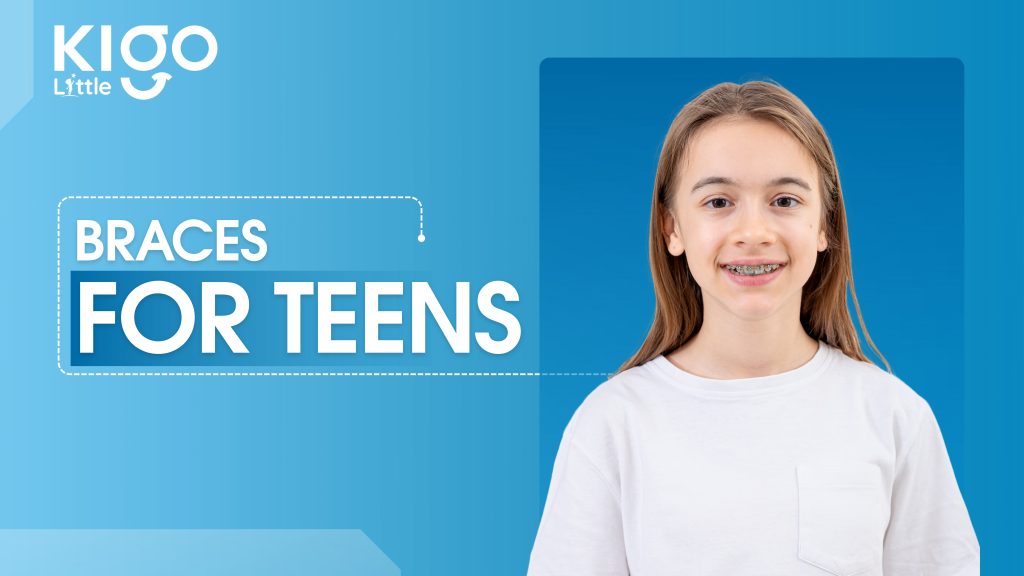The teenage years are full of changes—new schools, new friendships, and lots of self-discovery. For many teens, this is also the time when crooked teeth, bite issues, or overcrowding start to feel noticeable. While braces may seem like just a cosmetic fix, the truth is they play a huge role in both oral health and self-confidence.
If you’re a parent considering braces for your teen, or a teenager curious about what life with braces really looks like, this guide will walk you through everything—types of braces, treatment process, costs, and what to expect along the way.

Why Teens Often Need Braces
Braces aren’t just about straightening teeth for a picture-perfect smile. They also correct:
- Overcrowding – when teeth don’t have enough space and overlap
- Overbite or Underbite – when upper or lower teeth don’t align properly
- Crossbite – when some upper teeth sit inside the lower teeth
- Open bite – gaps when teeth don’t meet during chewing
- Spacing issues – gaps between teeth
Left untreated, these problems can lead to difficulty chewing, speech problems, jaw pain, gum disease, and low self-esteem.
Types of Braces for Teens
Today, braces come in more options than the traditional “metal-mouth” look parents remember.
- Metal Braces
- Most common and affordable option
- Made of high-grade stainless steel
- Smaller and more comfortable than older versions
- Teens can personalize with colored bands
- Ceramic Braces
- Tooth-colored brackets that blend with natural teeth
- Less noticeable than metal braces
- Slightly more expensive and can stain if not cared for
- Self-Ligating Braces
- Advanced braces that use clips instead of rubber bands
- Fewer adjustments needed, faster treatment in some cases
- Available in metal and ceramic versions
- Lingual Braces
- Placed behind the teeth (invisible from outside)
- Effective but may cause temporary speech changes
- More costly than traditional braces
- Clear Aligners (Invisalign Teen)
- Removable, transparent trays
- Nearly invisible, comfortable, and lifestyle-friendly
- Must be worn 20–22 hours daily
- Best for mild to moderate alignment issues
The Braces Journey – What Teens Can Expect
- Initial Consultation: Dentist or orthodontist evaluates teeth with X-rays and impressions.
- Treatment Planning: A customized braces plan is created.
- Placement Day: Braces or aligners are fitted—usually painless, though mild discomfort is normal.
- Adjustments: Every 4–8 weeks, adjustments or new aligners are provided.
- Treatment Duration: Most teens wear braces for 18–24 months, depending on complexity.
- Retainers: After braces, retainers are worn to maintain results.
Benefits Beyond Straight Teeth
- Better Oral Health: Aligned teeth are easier to clean, reducing risk of cavities and gum disease.
- Improved Function: Corrects bite, making chewing and speaking easier.
- Jaw Health: Prevents long-term issues like TMJ disorders.
- Confidence Boost: Teens with straighter smiles often feel more self-assured socially.
Cost of Braces
The cost varies based on type of braces (Metal Braces, Ceramic Braces, Self-Ligating Braces, Lingual Braces, Clear Aligners), clinic reputation, and treatment complexity. Many clinics offer instalment plans to make treatment more affordable.
Tips for Teens Living with Braces
- Brush and floss carefully after every meal
- Avoid sticky foods (gum, caramel) and hard foods (nuts, popcorn)
- Wear a mouthguard during sports to protect braces
- Keep orthodontic wax handy for irritation
- Follow the orthodontist’s instructions strictly for faster results
Braces are more than just a rite of passage for teens—they’re an investment in a healthier, more confident future. With so many options available today, from traditional braces to clear aligners, there’s a solution to suit every teen’s lifestyle and needs. The key is choosing an experienced orthodontist who can guide you through the process and make the journey smoother for your child.
At Kigo Little, we believe every teen deserves a confident smile they can be proud of. With advanced braces options and a friendly, supportive team, we make orthodontic care comfortable and stress-free. Call us today at 📞 +91 8333999987 to book a consultation and set your teen on the path to a lifetime of healthy, happy smiles.
FAQs
Q: At what age should my teen get braces?
A: Most teens start orthodontic treatment between ages 12–16, once most permanent teeth have erupted.
Q: Are braces painful?
A: Braces don’t hurt during placement, but mild soreness may occur after adjustments. Over-the-counter pain relief usually helps.
Q: Can teens play sports with braces?
A: Yes, but wearing a custom-fitted mouthguard is important for safety.
Q: Do braces affect speech?
A: Traditional braces don’t usually affect speech. Lingual braces may cause temporary lisping that improves with practice.
Q: How long will my teen need braces?
A: Typically 18–24 months, depending on the case. Some mild issues can be corrected faster.
Q: Are aligners as effective as braces for teens?
A: For mild to moderate cases, yes. Severe bite issues may be better treated with traditional braces.
Q: Do braces need special cleaning tools?
A: Yes, floss threaders or interdental brushes help clean around wires and brackets effectively





